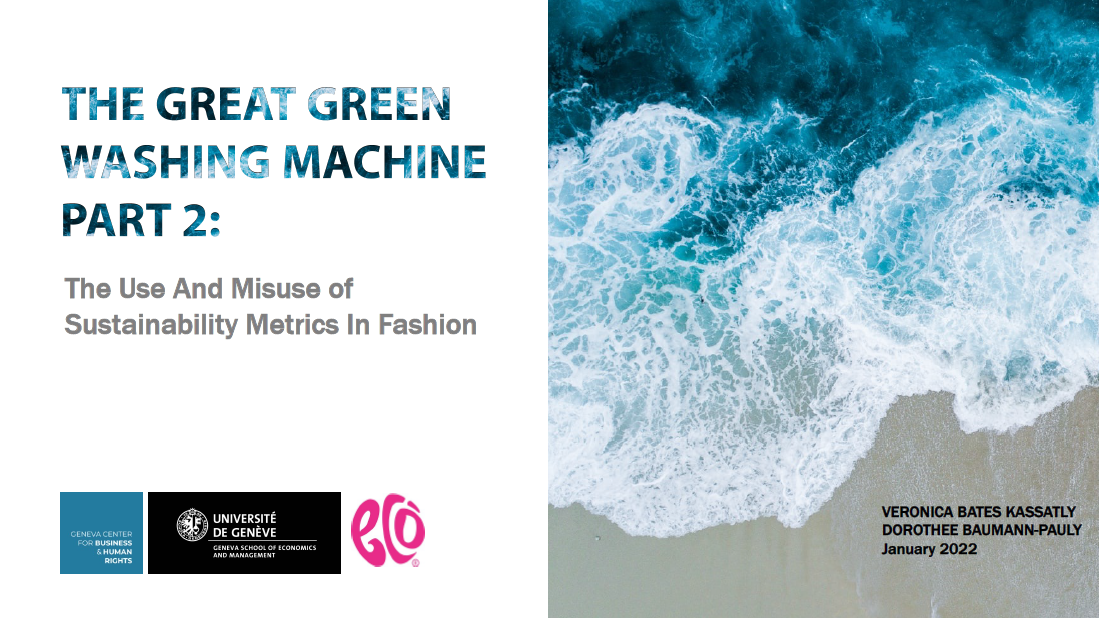The Great Greenwashing Machine - Part 2: The Use and Misuse of Sustainability Metrics in Fashion
The first report in the series: The Great Green Washing Machine Part 1: Back to The Roots Of Sustainability demonstrated that in fashion, at the present time, sustainability is not properly defined, and the vital metric – impact on the multidimensionally poor – is not considered. Those who have the least freedom and opportunity to live the lives they value – farmers, primarily, but not exclusively in the global south – are not consulted, and their complaints are ignored. All sustainability assertions in fashion are based solely upon purported environmental impact, whilst the impact on farmers of the major agricultural (cotton) sustainability programs is not accurately captured, if at all.
This second report The Great Green Washing Machine Part 2: The Use and Misuse of Sustainability Metrics in Fashion (PDF), authored by Veronica Bates Kassatly and Prof. Dorothée Baumann-Pauly, demonstrates that even the environmental impact of fashion is not being correctly assessed, neither broadly, nor narrowly.
Current assessments are broadly incorrect for two reasons. Firstly, because measurement is cradle to gate rather than cradle to grave so the harmful outcomes in some garments’ use and disposal are ignored. And secondly, because impacts are calculated per kilo, when what really matters – what is key – is impact per wear.
Clothes are supposed to be worn multiple times, and if garments of some fabrics are worn many times more than others – and that does appear to be the case – then that should be included in sustainability calculations. If a dress “costs” 12, whether that is US Dollars or an environmental measure, and it is worn once, the cost is 12 per wear. If another dress “costs” 1,200, and is worn 100 times, the cost/impact is also 12 per wear. The difference is that at the end of those ‘100 times’, in the first case there are 100 dresses to dispose of, and in the second, only one.
Throughout this report, an associated action point for each concern is provided for policymakers and corporations, ensuring that in meeting the needs of the present, organisations are not compromising the ability of future generations to meet their own needs.
Authors: Veronica Bates Kassatly & Dorothée Baumann-Pauly
Launch date: 15 March 2022
Publisher: Eco-Age
Scroll down to download the white paper, watch the recording of the launch event & view the media coverage.
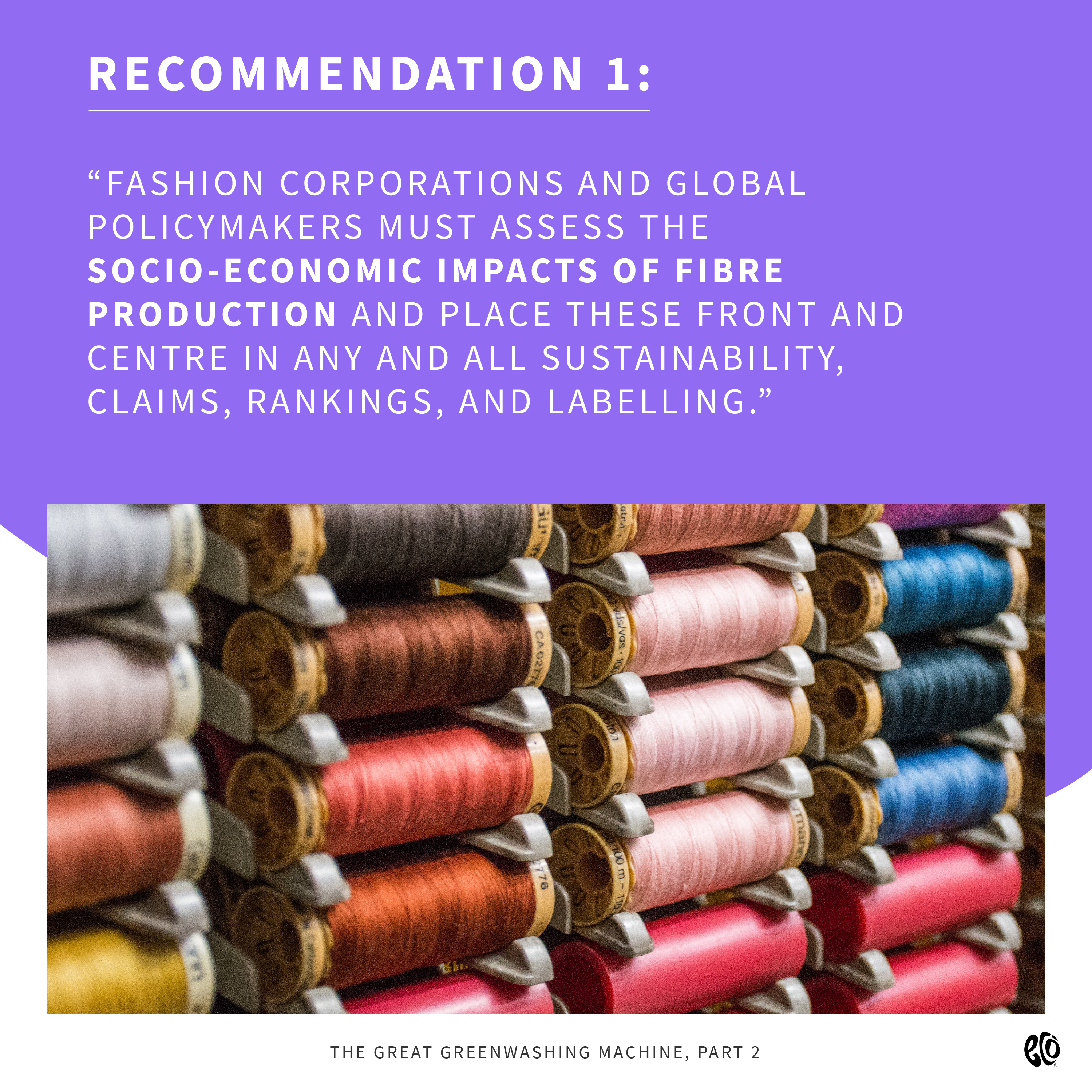

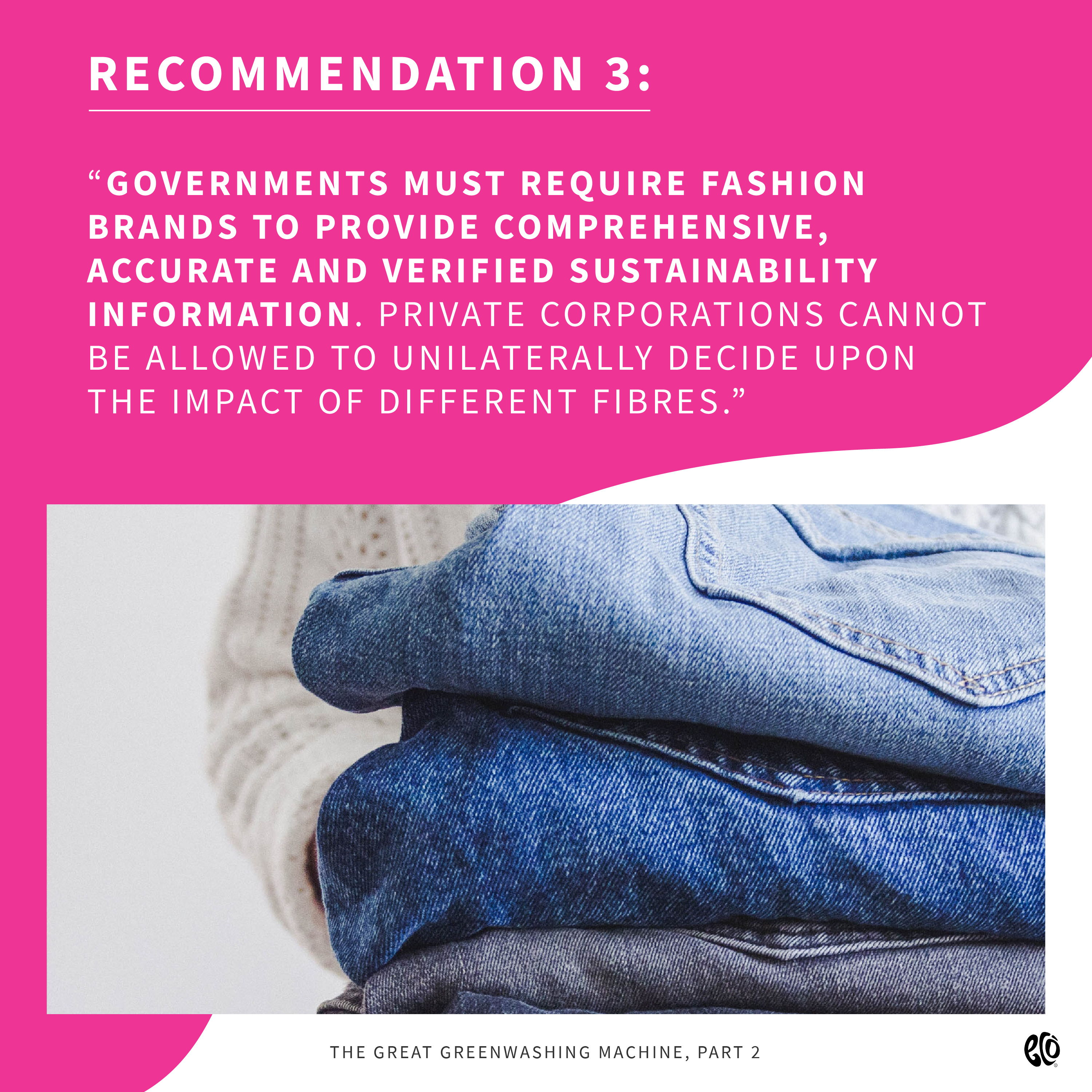
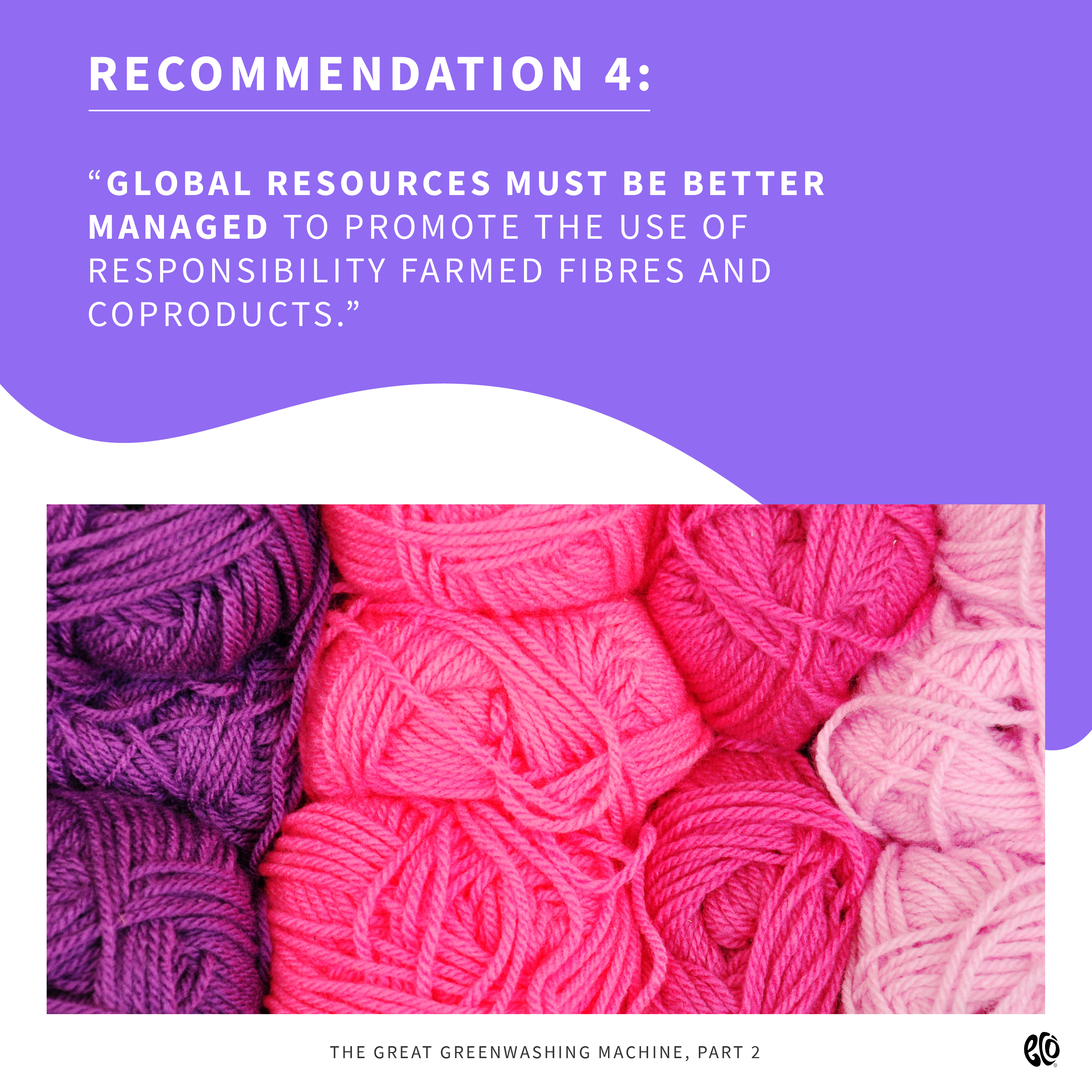
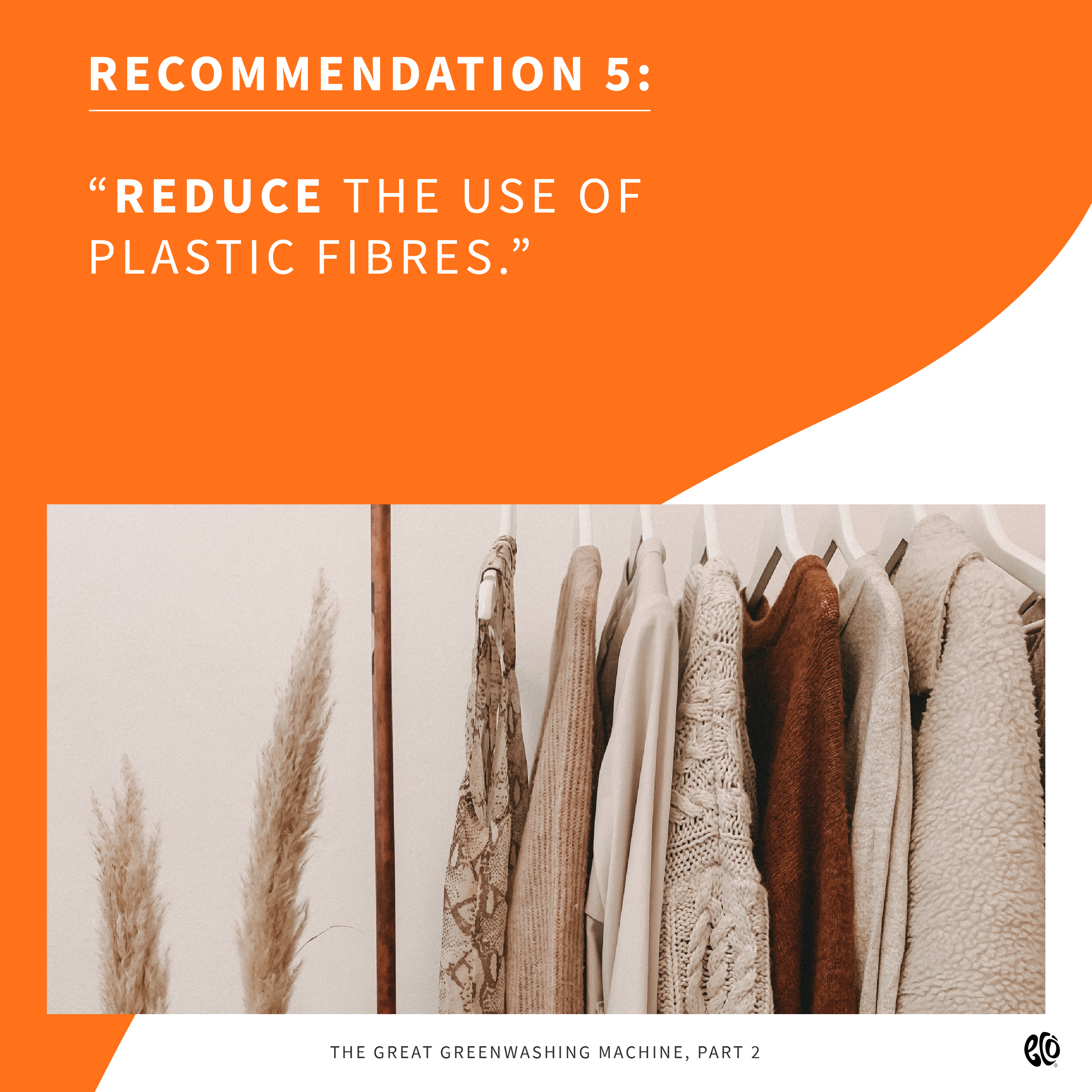
Media Coverage
- Women’s Wear Daily, Former World Bank Analyst Decries Fashion’s Impact Miscalculation in Eco-Age Report, by Kaley Roshitsh (15 March 2022)
- Fashion United, How the fashion industry is misusing sustainability metrics, by Don-Alvin Adegeest (16 March 2022)
- TEXDATA International, The great green washing machine - part 2 (24 March 2022)
- International Wool Textile Organisation (IWTO), The Great Green Washing Machine, Part 2, by Jeannette Cook (24 March 2022)
- Border Traveller, How the Fashion Industry is Misusing Sustainability Metrics (28 March 2022)
- Business of Fashion, Fashion’s Sustainability Standards Face Criticism Amid Regulatory Push, by Sarah Kent (28 March 2022)
- Euronews, ‘Big oil’ is propping up the fast fashion industry, how do we stand up for human rights?, by Maeve Campbell (7 April 2022)
- Blick, L’abus du label «durable» dans la finance et la mode fait des dégâts, by Myret Zaki (25 April 2022)
- Le Journal de l’UNIGE, Un rapport s’attaque aux mythes de la mode vestimentaire durable (27 April 2022)
- Business of Fashion, Green or Greenwashing: Who Gets to Decide?, by Sarah Kent (5 May 2022)
- Financial Times, I love my £6 Primark bra. Does this make me a toxic consumer?, by Jo Ellison (25 August 2023)

